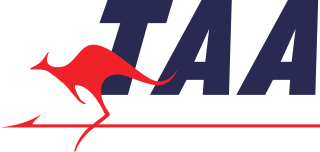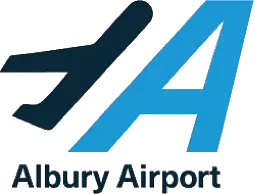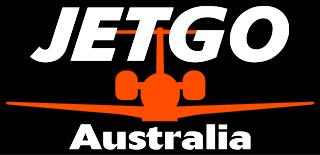
Trans Australia Airlines (TAA), renamed Australian Airlines in 1986, was one of the two major Australian domestic airlines between its inception in 1946 and its merger with Qantas in September 1992. As a result of the "COBRA" project, the entire airline was rebranded Qantas about a year later with tickets stating in small print "Australian Airlines Limited trading as Qantas Airways Limited" until the adoption of a single Air Operator Certificate a few years later. At that point, the entire airline was officially renamed "Qantas Airways Limited" continuing the name and livery of the parent company with the only change being the change of by-line from "The Spirit of Australia" to "The Australian Airline" under the window line with the existing "Qantas" title appearing above.

Ansett Australia was a major Australian airline group, based in Melbourne, Victoria. The airline flew domestically within Australia and from the 1990s to destinations in Asia. After operating for 65 years, the airline was placed into administration in 2001 following a financial collapse and subsequent organised liquidation in 2002, subject to deed of company arrangement. The last flight touched down on 5 March 2002.
Impulse Airlines was an Australian airline which operated regional and low-cost trunk services between 1992 and 2004. It was acquired by Qantas in 2001 to form the basis of Qantas' new regional airline QantasLink. The airline had its head offices on the grounds of Sydney Airport in Mascot.

East-West Airlines was an Australian regional airline founded in Tamworth, New South Wales in 1947. It operated to major regional city-centres and connected these centres to various state capitals, and by the 1980s it was Australia's third largest domestic airline. It also carried out its own heavy maintenance in Tamworth and operated a network of Travel Centres.

MacRobertson Miller Airlines (MMA) was a Western Australian airline that operated between 1927 and 1993. After being purchased by Ansett Transport Industries in 1968, it was eventually rebranded Ansett WA.
Rex Airlines Pty Ltd is an Australian regional airline based in Mascot, New South Wales. It operates scheduled regional and domestic services. It is Australia's largest regional airline outside the Qantas group's companies and serves all 6 states across Australia. It is the primary subsidiary of Regional Express Holdings.
QantasLink is a full-service, regional brand of Australian flag carrier Qantas and is an affiliate member of the Oneworld airline alliance. As of 2024, QantasLink provides over 2,000 flights each week to 61 metropolitan and regional destinations across Australia, as well as short-haul international services to New Zealand, Singapore, the Solomon Islands and East Timor.

Eastern Australia Airlines Pty Ltd is an airline based on the grounds of Sydney Airport in Mascot, New South Wales, Australia. It is a regional domestic airline serving sixteen destinations within Australia under the QantasLink banner. Its main base is Sydney Airport, with a hub at Melbourne Airport.

Australian National Airways (ANA) was Australia's predominant aerial carrier from the mid-1930s to the early 1950s.

Burnie Airport, also called Burnie Wynyard Airport or Wynyard Airport, is a regional airport located adjacent to the town of Wynyard, about 17 kilometres (11 mi) west of Burnie, Tasmania, Australia. Formally named the Wynyard Aerodrome, the first official opening occurred on 26 February 1934. The Burnie Airport is majority owned by the Burnie City Council.

Hazelton Air Services Pty Limited, trading as Hazelton Airlines, was an Australian regional airline which operated until 2001. It was established as an independent airline but by the end of its existence had become a subsidiary of Ansett Australia.

Albury Airport is a regional airport located 2 nautical miles northeast of Albury, New South Wales, Australia. The airport, which also serves Albury's adjacent twin city of Wodonga, Victoria, was the fifth busiest in New South Wales as of 2016–17, handling 257,769 passengers. However, like most Australian airports, the impacts of travel restrictions and state border closures in response to the COVID-19 pandemic resulted in a significant reduction in revenue passengers. ABX handled 107,934 passengers in the 2021–22 financial year and was the 32nd busiest airport in Australia. In addition to regular public transport flights, Albury airport handles a relatively large number of charter, freight, agricultural, and general aviation aircraft movements and hosts the official weather station for Albury–Wodonga.

Pel-Air Aviation Pty Ltd is an airline based in Mascot, Sydney, Australia. It is a wholly owned subsidiary of Regional Express Holdings, which also owns Australian airline Rex Airlines.

Kingscote Airport is located 6.5 nautical miles southwest of Kingscote, South Australia, the main town on Kangaroo Island, in the locality of Cygnet River. The airport is the sole airport for Kangaroo Island. The airport is served by regular public transport and many charter flights. The airport is managed by the Kangaroo Island Council, which has operated the airport since 16 June 1983.

Cooma–Snowy Mountains Airport is an airport located in Coolringdon, 9 nautical miles southwest of Cooma, New South Wales, Australia. The airport serves the town of Cooma and the resorts of the Snowy Mountains and Australian Alps, experiencing increased traffic during the winter months.

Shellharbour Airport, formerly Illawarra Regional Airport, also referred as Albion Park Aerodrome or Wollongong Airport, is an airport located in Albion Park Rail, New South Wales, Australia.
The Two Airlines Policy was a policy of the Government of Australia from the late 1940s to the 1990s. Under the policy, only two airlines were allowed to operate flights between state capital cities and between capitals and nominated regional centres. The Two Airlines Policy was a legal barrier to new entrants to the Australian aviation market. It restricted intercapital services to the two major domestic carriers. This anti-competitive arrangement ensured that they carried approximately the same number of passengers, charged the same fares and had similar fleet sizes and equipment.
Airlines of New South Wales callsign "NEWSOUTH" was an Australian domestic regional airline that operated from 1959 until its merger into Ansett in 1993. It was formed by Reg Ansett's takeover of Butler Air Transport. Airlines of New South Wales operated air passenger services in New South Wales, and later in other Australian states. In 1964–65 the airline fought a High Court case, Airlines of New South Wales Pty Ltd v New South Wales, that was significant in adjudicating the spheres of constitutional power of the national and state governments in respect of air navigation.

JetGo was an Australian regional airline and air charter company based at Eagle Farm, Queensland near Brisbane Airport.
Vee H Aviation Pty Ltd, operating as Link Airways, formerly known as Fly Corporate, is an Australian regional airline based at Brisbane Airport, Queensland. The airline operates scheduled regional passenger services in Queensland, New South Wales, Victoria, Tasmania and the Australian Capital Territory. Link Airways operates a fleet of Saab 340B Plus and Fairchild Metro 23 turboprop aircraft.


















